Media | Articles
7 Dodge Viper Facts You May Not Know, from the Men Who Built It
We may never see another car quite like the Dodge Viper again. That’s a sad truth, but one that feels safe to accept. When the stunning Viper concept first appeared at the 1989 North American International Auto Show, it felt like the massive jolt the Chrysler Corporation needed to break free from a successful but sleepy product lineup.
The story of how the Viper came to be is one of grit, scrappiness, and the best kind of corporate mischief guided by visionary leaders and scores of people who believed in an idea to their core. In the latest episode of his Never Stop Driving podcast, our Editor in Chief, Larry Webster, and editor/photographer Cameron Neveu had a chance to sit down with two of the most important people from that Viper team: Herb Helbig and Dick Winkles. Helbig was the manager of vehicle synthesis for much of the Viper’s lifetime but he began as a transmission and suspension engineer on the project. Winkles was the powertrain engineer behind the Viper’s legendary V-10 engine. They shared so many interesting tidbits throughout the hour-and-a-half conversation that our notes on the episode ran north of 4800 words.

We won’t subject you to all that madness here, but we will whet your appetite with a handful of fascinating details you might not know about the Viper. Right up front, know this: The episode, which you can catch below, is absolutely worth watching in its entirety—you’ll want to hear the rest of the surprising details of the Viper’s history straight from the mouths of those who were there.
If you’re a fan of the Viper, some of this may be familiar to you. But if you’re new to the car or perhaps only vaguely familiar with it, these seven tales from the men who were there from the start are guaranteed to give you a finer appreciation of the car.
Blank checks helped propel the Viper beyond a mere concept

The Viper concept made a huge splash at its debut at the 1989 Detroit International Auto Show, but the gala that took place the Friday before was perhaps just as important. The party was a mixer of industry execs, well-to-do buyers, dealership magnates, and generally anyone who was anyone inside the auto industry.
Marketplace
Buy and sell classics with confidence
At the gala, Bob Lutz, Tom Gale, François Castaing, and the other Chrysler execs who had ginned up the idea behind the concept were mingling with a sizable audience that had come to gawk at the wild machine. “People were coming up to Tom Gale and Bob Lutz and saying, ‘You know, you have to build this car,'” said Helbig. “‘Not only that, but here’s my checkbook, I’m gonna give you the check, I want the first car. You write the number in.'”
At this point, the car was barely beyond the idea stage, and the path forward was anything but clear. But Lutz and the team knew that the “take my money!” levels of enthusiasm from potential customers was significant enough that it just might give the company the exit velocity it needed to break free of the K-Car mold.
A few dozen staff were invited to the Viper’s initial planning meeting. Some 300 people showed up.

Following the auto show and the buzz that the Viper generated, Chrysler’s top execs decided to test the waters internally to see if there were people who wanted to work on this. But how do you get a team together to take a moonshot car like this from a pipe dream to reality? The right people can make or break a project like this. Lutz and his team knew that.
The plan, as Helbig tells it, was to hand-select a bunch of gearheads from the company, invite them to Chrysler’s design dome at Highland Park for a secret meeting, and ask those attending, “Does this make any sense?”
“There might have been 60 people on the list for this secret meeting,” Helbig explained. “But of course, there are no secrets in a company.” News of the meeting traveled fast through the grapevine, and Helbig, along with a cubicle neighbor who tipped him off, crashed the meeting. “We show up at this styling dome in Highland Park—there was really nobody at the door to see if you’re on the lists—so we just sign our names, walk in, and blend in with the crowd.”
That crowd—which was supposed to number around 100 on the high side—ended up being nearly 300 people, according to Helbig. If the goal was to see if there was any enthusiasm for a Viper, Lutz, Gale, Castaing, and the other senior leaders surely got the message. Instead of filling out a list of team members, the leaders had to whittle the team down to a manageable amount.
Creative accounting kept the project entirely off bean-counter radar

Automakers are massive organizations dealing with budgets that often add up to billions. Even back in the late 1980s, a budget in the tens of millions didn’t warrant any sort of oversight, depending on who held the purse strings.
As Helbig tells it, $50M was the threshold at which you had to flag a budget for accounting’s attention. So, to keep this program on the down-low and beneath scrutiny from the bean counters, the Viper program was given a budget just shy of that $50M threshold. “That way, it dropped down a decimal point and nobody could ever see it,” explained Helbig.
To give some context around how much money was in the halls of Chrysler at the time, Winkles noted that certain engine programs were running budgets of around $30-$40M, so you can about imagine how scrappy that team had to be with development dollars for an entire car.
Imagine one of the most significant cars ever coming from Chrysler having to be developed in the dark with a small enough stack of cash that nobody could bother checking into where that money was going! That sort of stealth—creative accounting, backroom dealings, after-hours labor—only adds to this car’s mystique.
Lamborghini had a hand in the V-10, and it nearly had trick F1 tech
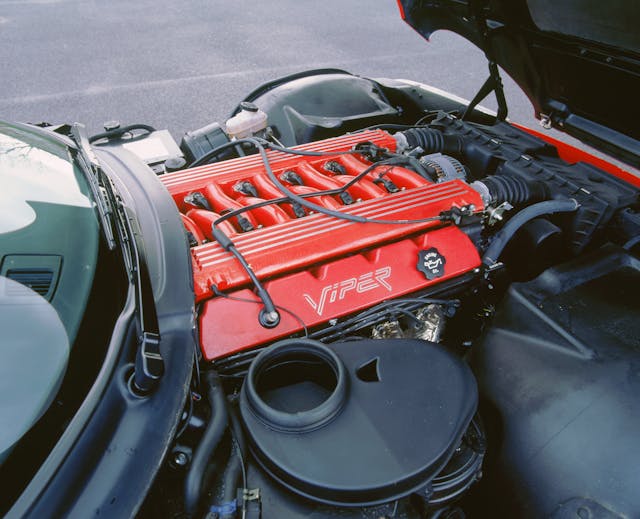
From the outset, the Lutz and the team wanted the Viper to have a V-10. That’s where Lamborghini, which Chrysler had recently purchased, came in.
As Winkles explains, Lamborghini had an in-house source large enough to make the big aluminum castings needed. Chris Theodore, then the powertrain director at Chrysler, knew that the Viper’s V-10 would need to roll down the same assembly line as the iron-block V-10 that Chrysler was also cooking up for the Ram pickup.
Theodore took the blueprints for the aluminum V-10 to Mauro Forghieri, the chief engineer of Lamborghini’s Formula 1 program at the time, and asked for assistance to make the Viper motor something truly fitting of a sports car.
Well, as Winkles explained, Forghieri may have taken a few too many motorsport-derived liberties with the initial result. Some exotic tech, such as shorter water jackets around the cylinders and an aluminum bedplate for the bottom end, weren’t going to cut it in something meant for street driving.
Despite taming a few things on the Viper’s engine in service of practicality, it feels safe to say the end result was still epic.
Cell 13: Valhalla for Chrysler’s most epic engines

Seriously, this entire segment could warrant its own podcast—maybe even its own book. Even if the final prototype V-10 wasn’t quite as exotic as what Mauro Forghieri had suggested, that doesn’t mean it was treated to a run-of-the-mill development process.
Enter cell 13, the dyno where the V-10 proved its mettle. “[Cell 13 is] not any dyno cell,” said Helbig, “It’s the dyno cell. It’s the dyno cell that ran all the high-performance, big-inch motors, all Petty’s Hemis, all the NASCAR work was all done at cell 13 … cell 13 was like holy ground.”
Entering that dyno room was like entering the Colosseum in Rome. “You could go into cell 13, you could look up at the ceiling and you’d see where pistons had gone up there and different parts had destroyed parts of the ceiling,” said Winkles.
Cell 13, as Winkles explained, was the only cell left in Chrysler’s Highland Park facility with a dynamometer rated for more than 300 horsepower. In other words, the only place for a V-10 of this ilk to cut its teeth. So, even though it had been mothballed for some time prior to the Viper program, cell 13 was brought out of retirement to see if it could lend its magic touch to one more epic engine.
“When a project went in there, it seemed to come out better,” said Winkles. “It always had that mystique about it because of what it had done in the past.”
(We won’t spoil it, but be sure to pay close attention to Helbig’s story about his experience near cell 13.)
The Viper almost had an all-aluminum 426 Hemi V-8

Vipers and V-10s go hand-in-hand, but at the project’s outset, that match wasn’t a guarantee—despite Bob Lutz’s mandate that this unique car have an equally unique engine. Some within the program were concerned about the compressed timeline between the concept and production car (Lutz gave the team just 36 months).
“One of the things that we started thinking about was, ‘okay, if the V-10 doesn’t make it, what’s our backup?'” said Helbig. “Well, there was only one backup. To have enough draw to make this car so special, it had to have an all-aluminum 426 hemi.”
Mopar fanatics will rightly note that Chrysler never made an all-aluminum 426. “We didn’t, but Keith Black did,” noted Helbig with a grin. Keith Black was a drag-racing legend who had become famous for aluminum-blocked V-8s back in the 1970s.
“We went to see Keith Black under the cover of darkness—you want secret meetings? This was like a secret trip to the West Coast to talk to Keith to find out if he had any interest in building all-aluminum motors.”
Though it ultimately didn’t pan out that way, picturing a Viper with an all-aluminum 426 sounds like a fun way to pass an evening with Mopar faithful.
Last-minute supplier drama, solved by an ex-Corvette man

Initially, the Viper’s six-speed manual transmission was slated to come from Getrag, a German supplier who was looking to break into the North American market at the time. “We knew a bunch of the guys that worked there,” explained Helbig, noting that many of the Getrag North America guys were ex-Chrysler employees. “We had a great relationship, [and] they built us this really really great transmission.”
But in the waning phases of development, Getrag’s German management came in and said that the company couldn’t sell Chrysler the six-speeds for the agreed-upon price. Mind you, this was after the purchasing team had put together a whole pricing scheme for the Viper, and there wasn’t much margin to work with, according to Helbig. “We tried everything, but their CEO was like, ‘no, double the price or no sale.”
In the scramble for a solution, Roy Sjoberg, a Chrysler exec who was big in the Viper program (and who had worked on Corvettes under Zora Arkus-Duntov), came to the rescue. As Helbig tells it, Sjoberg had a few friends over at BorgWarner. “Over some undetermined number of Jack Daniels at the Indy 500 one year, he and the head of engineering for BorgWarner, they were in some suite and they were knocking ’em back, and Roy got them to commit to help us out.”
***
The interview covers many more topics, ranging from what happened as the first Vipers began rolling off the assembly line to the incremental improvements made in the ensuing generations. Rather than lay any more of them out here, we encourage you to do yourself a favor and watch the discussion in full below. Let us know in the comments which factoid you found most interesting.
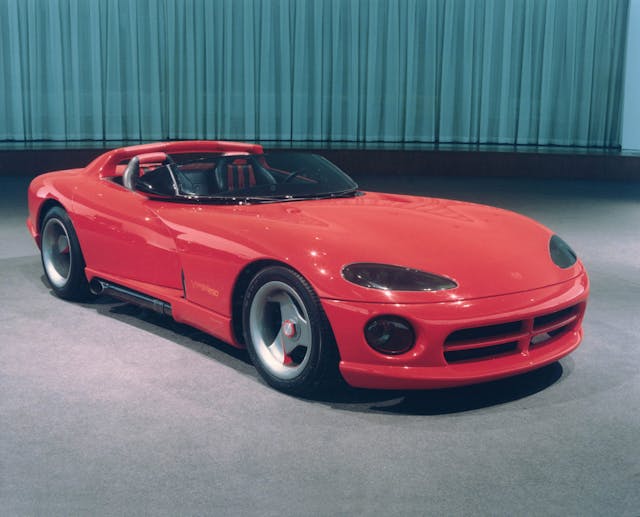






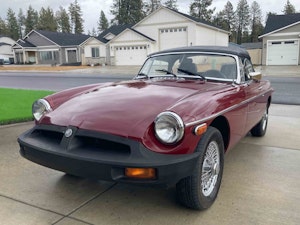
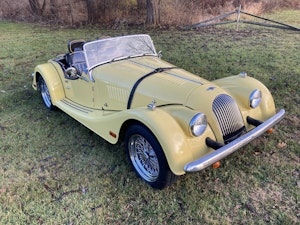










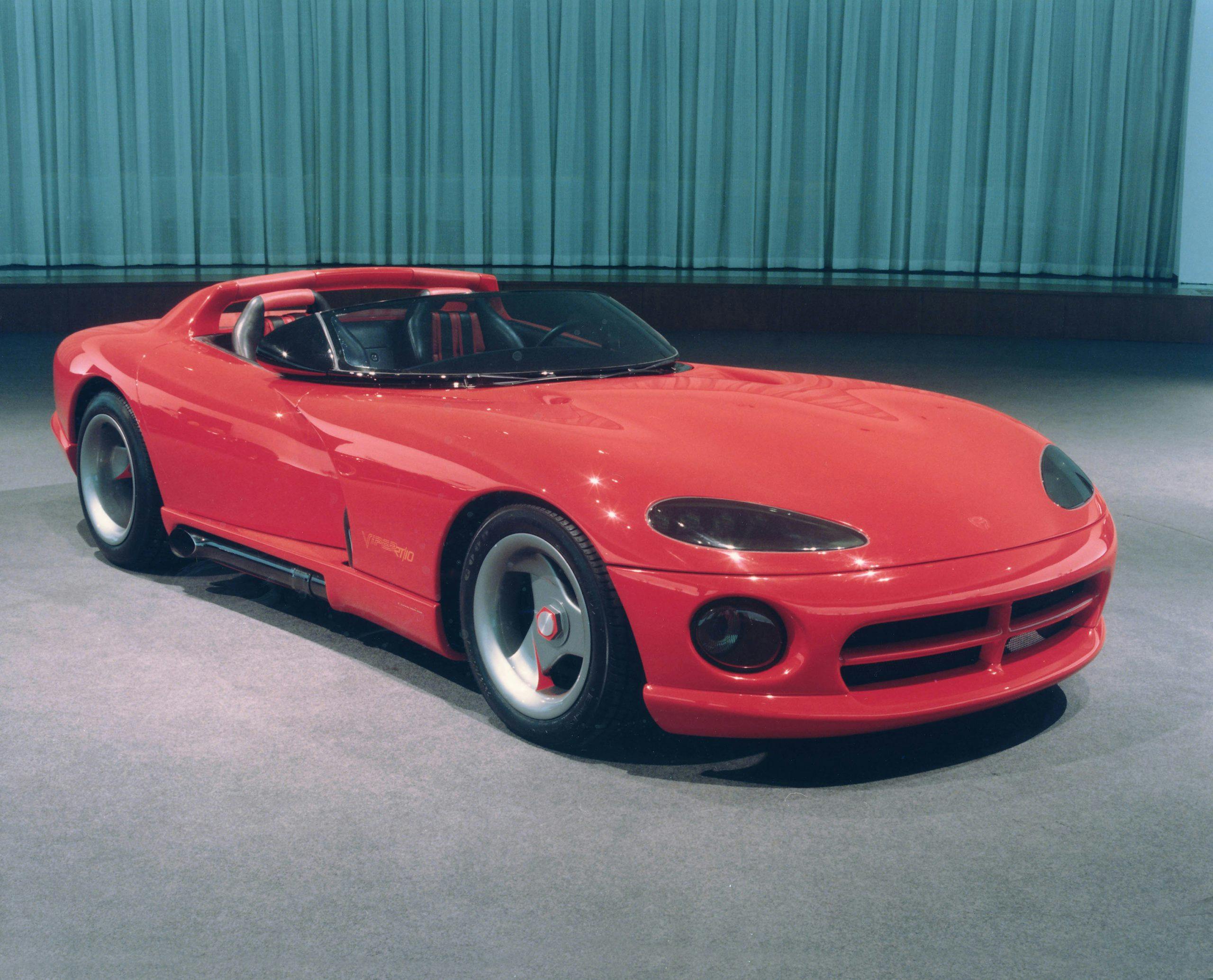
“The fastest Lorry in the World”.
1991 the Viper was the pace car for the Indy 500. I was a free lance photographer working at the track. One of my clients was Snap On Tools. Through that gig I was given an up close and personal look at the car. It was actually pretty hilarious. The car was simply not ready. They would take it out for test laps then bring it right back to Gasoline Alley into the garage and shut the door immediately. They would then try to figure why it was over heating and such. There was loose wires on the floor of the trunk and some other problems they had to deal with. It was lucky to last the entire 500.
The viper was a last minute replacement for the stealth because the stealth wasn’t made in the US.. that was a pace car requirement.. Dodge had to hustle to get the vipers ready for the race.
Mine was waiting for me in the dealer’s showroom in 2019.
I was a Chrysler tech for 30 years. I was one of the first techs to sign up to up for training in So Cal. The class was awesome. I still have all my training books. You definitely had to know how to drive for sure. No ABS or traction control. Great car
They were bad fast but exhaust sounded like a v-6 on steroids I raced one in my corvette I was embarrassed then he proceeded to do a 1/8 mile burnout to further embarrass me
Excellent interview, better than most of what one might find streaming, worth the time
Probably 20-25 years ago I’m sitting on my front porch in my quiet neighborhood. Just side streets with no stop signs It’s a nice sunny afternoon and I’m the second house from the corner. Two guys in a viper entered the intersection and did two donuts Nothing remarkable but it’s just a memory I get a kick out of
I was a General Sales Manager through the 1980s. Lived through this gestation.
Later as the owner of a smal CDJ dealership took delivery of an RT10.
Then at the Chrysler Tech Center gatherings for dealers saw the GTS prototype. Told Mr. Lutz ‘I want one’. Yea, got one.
A great car. A great part of American automobile history.
Sadly Chrysler as an American car company no longer exists.
I watched almost every one of those first gens roll by the gas station I worked at in high school. The testers lengthened the loop they ran out of Mack assembly to get some extra time behind the wheel. Magical experience.
Back in the early 90’s at a backyard cookout I was introduced to the owner of a new Viper. When I mentioned my young son’s obsession with the car he asked where I lived. I said about 5 miles away and he said I should take it home and show it to him. When I politely declined (I had just met him and it was a brand new car) he insisted. The one caveat is to promise to baby it in 1st gear, and go easy through second. As the owner of Firebirds, Chevelles, and several Corvettes including currently a C7, I thought yeah right, but I respected his wishes. The car was unrefined, noisy, the suspension although tight, needed further refining, but the torque was another thing. Rolling on the throttle in second was intoxicating, and brutal. Overall the best word for the car was unapologetic. Great fun that deserves its’ place in history.
my friend has #8 hand built executive driven car. its a nice car i haven’t gotten a chance to drive it yet. but we found a 57 vette with 1100 miles we’ll be restoring so sounds like I better take it for a spin. I’ll go slow in first n second.
Not quite a Viper but I think Dan Gurney took a Viper V10 and placed it in a motorcycle frame of his own design, much extended. I remember being at the Sports car races at Watkins Glen and the Toad Hall racing team had one they ran up and down the outer pit area. Never saw it at high speed, but it would have been a wild ride I’m sure.
I had a good friend who was a Chrysler engineer at the time. He frequently brought home test mules and would let me drive them. I once drove a pre-production Intrepid with the 3.5 V6 that had zero emissions or restrictions on it. That thing made POWER! It would roast the front tires in all 4 gears! The car was put together with different colored body panels and two different bucket seats in it and no other interior! That led me to buy an Intrepid when they came out.
The best test mule that my friend ever brought home was a red Viper roadster and it was in 1991, well before any were produced for the public!
That Viper was amazing to drive and had to go from 2nd gear because 1st gear just led to shredding tires! He was lucky enough to sign it out on a Friday, so we got to play with it all weekend!
Another exposure that i had to Viper was earlier, in 1989. I was having an engine built by Arrow Racing and would bring them parts. One day, I walked in and saw a really big, aluminum 4bbl intake sitting on a cart. It was a dual-plane, emissions ported, single 4bbl, with a split plenum.
It was bigger than any intake I’d ever seen, so I asked my machinist what it was for & he refused to say, other than Chrysler prototype. After weeks of asking, he finally said it was for the 426 Hemi.
Direct Connection had been selling restoration parts, and race parts; heads, etc for the 426 Hemi thru the 80s but this intake didn’t make sense.
The restoration guys wouldn’t want it and the race guys wouldn’t want it, so a single 4bbl, dual plane, emissions ported aluminum intake had no purpose going on a 426 Hemi in 1989! The machinist finally confessed that Chrysler was building a new Sportscar to compete with Corvette and it’s getting a new 426 street Hemi!
He didn’t even know the Viper name yet!
I have had an ’02 GTS for about 7 years now, and still can’t get over how sexy it is, but more importantly how incredibly fun to drive it is. Everything they say about respecting the car is absolutely true… treat it right, and it will reward you with one of the best driving experiences you’ll ever have. One time I let a friend drive it, and it scared the crap out of me, never let anyone else drive it since. When I have it out, I’ve been offered cash for it on the spot many times, multiples of what I paid for it, but I’ll never sell it. Thank you Herb, Dick, and everyone who made this magic possible.